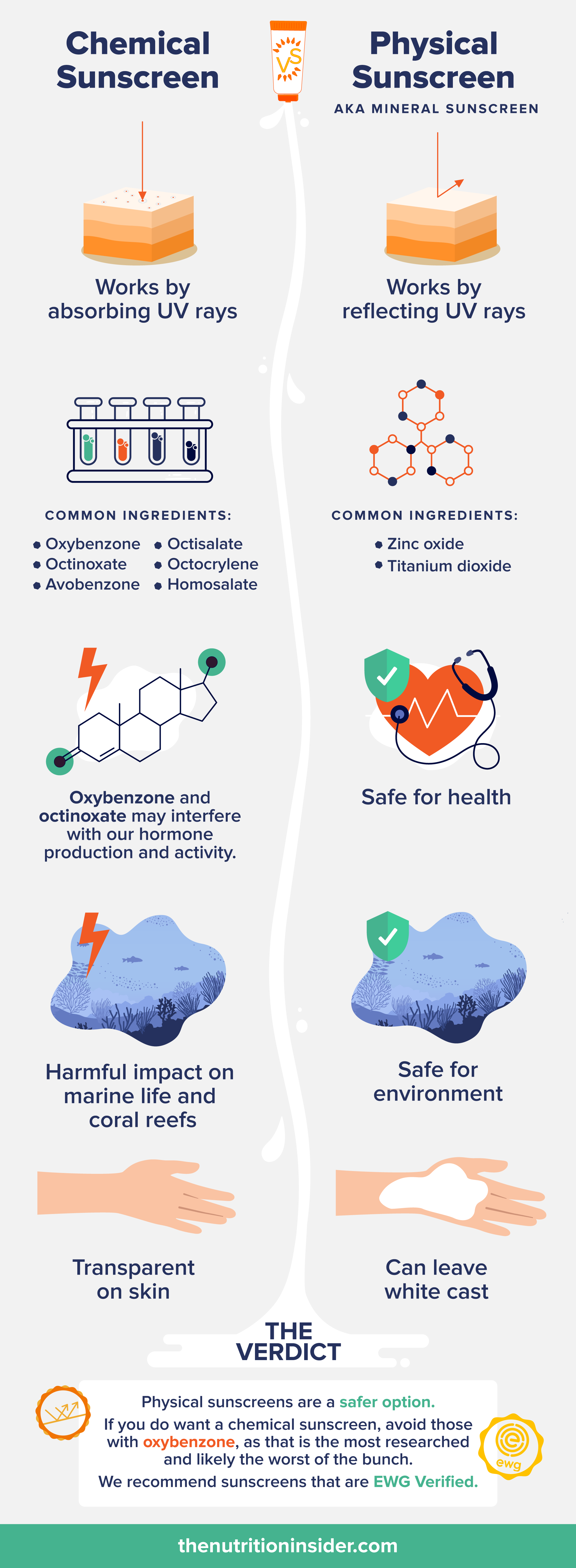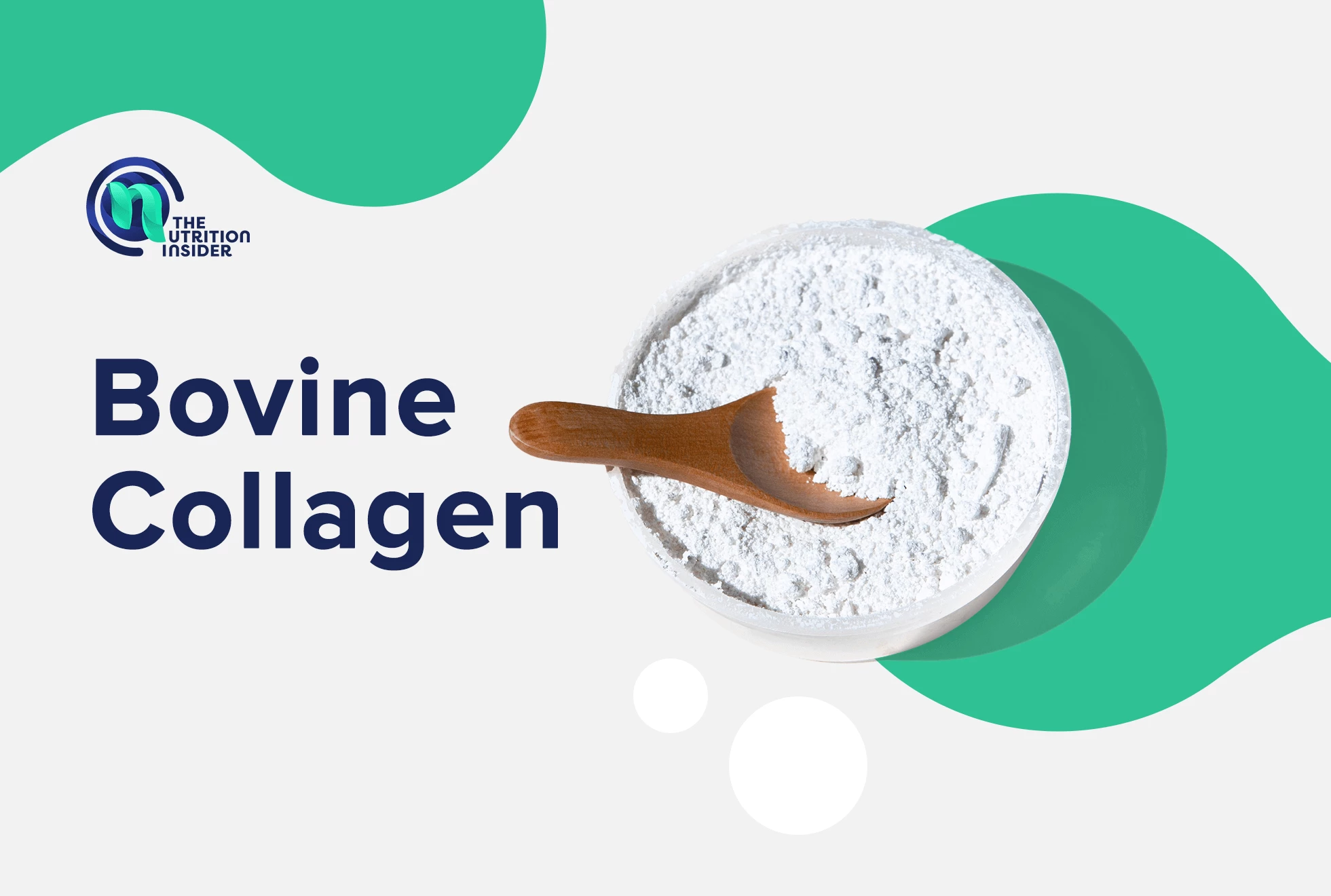This post contains links through which we may earn a small commission should you make a purchase from a brand. This in no way affects our ability to objectively critique the products and brands we review.
Should You Use Physical or Chemical Sunscreen?
Evidence Based Research To fulfill our commitment to bringing our audience accurate and insightful content, our expert writers and medical reviewers rely on carefully curated research.
Read Our Editorial Policy
The dog days of summer are upon us, with rising temperatures and more time spent outside in the blazing sun becoming daily occurrences.
Most people are well aware by now that they should wear sunscreen in the summer (and every day!), but it can be confusing to know which type to wear. Should you go for physical or chemical sunscreen? Is physical the same as mineral? And aren’t chemicals bad?
Keep reading if you’ve been hesitant in the sunscreen aisle about what to choose—we’ve got your back with these questions and more (actually, someone else should get your back when it comes to sunscreen coverage!).
Physical Vs. Chemical Sunscreen
First things first: what exactly are chemical and physical sunscreens, and what’s the difference between the two?
The difference between physical and chemical sunscreen comes down to what they are made of and how they protect you from the sun’s rays—let’s take a closer look.

What Is Physical Sunscreen?
As the name suggests, physical sunscreens provide a physical barrier between your skin and the sun’s ultraviolet (UV) rays.
When you see lifeguards with slathered white noses or people at the beach with a ghostly cast, they are using physical sunscreens.
Also known as mineral sunscreen, physical sunscreens provide broad-spectrum protection (meaning they protect against both spectrums of UV radiation, UVA and UVB) by reflecting UV rays away from your skin.
Although both UVA and UVB rays can harm health in excess doses, UVB is the one more likely to cause sunburns and skin cancer, while UVA more often causes skin damage like hyperpigmentation, aged-looking skin, and wrinkles.
Zinc oxide and titanium dioxide are the two ingredients most commonly found in mineral sunscreens and used for physical sunblock.
You may also see micronized zinc oxide or titanium dioxide sunscreens, which use tiny particles of these minerals that work pretty similarly to chemical sunscreens by absorbing UV rays in addition to reflecting them.
Although mineral sunscreens don’t have much in the way of health-related downsides, one thing that bothers most people is the chalky white residue they leave behind. Zinc oxide formulations tend to leave less of a ghostly-white cast than titanium dioxide. Plus, zinc oxide may also provide superior broad-spectrum UV protection.
What Is Chemical Sunscreen?
Chemical sunscreens are made of active ingredients (“chemicals”) that absorb UV rays before your skin can absorb them. Unlike physical or mineral sunscreen, which creates a barrier that physically blocks UV rays, chemical sunscreen absorbs UV radiation. These active compounds include:
- Oxybenzone
- Octinoxate (aka octyl methoxycinnamate)
- Avobenzone
- Octisalate
- Octocrylene
- Homosalate
Chemical sunscreens don’t create a physical barrier, so they typically absorb better into the skin and don’t leave a whitish cast or greasy texture.
While that sounds great, many chemical sunscreens have been scrutinized for their safety and potential adverse health effects.
Are Chemical Sunscreens Safe?
Two of these chemicals seem to have the most cause for concern: oxybenzone and octinoxate.
Oxybenzone and octinoxate are thought to be endocrine disruptors, which are a group of chemicals or compounds that interfere with our natural hormone production and activity.1
Oxybenzone is particularly troubling because it is more readily absorbed into the blood than other ingredients and stays in the body for up to three weeks.
A systematic review of 29 studies concluded that higher blood levels of oxybenzone are linked to changes in thyroid hormones, testosterone levels, kidney function, and pubertal timing. However, not all of the studies confirmed these associations.1
Some research with animals has even shown that oxybenzone increases the risk of breast cancer.2
Several countries and regions, including Hawaii, Key West, the Virgin Islands, and Aruba, have banned oxybenzone and octinoxate.1 This is mainly because of their harmful impact on marine life and coral reefs, but the potential adverse effects on human health are also a factor.
Although oxybenzone is still permitted in most states, its use has declined dramatically. But what about the other chemicals in these sunscreens? Are those safe?
In that same systematic review, octinoxate was not found to have any of the same adverse effects as oxybenzone, although it is still likely considered an endocrine disruptor. There is not nearly as much research on octinoxate as on oxybenzone, but some animal studies have shown an association between metabolic parameters and thyroid function.3
The European Commission has deemed some of the other chemical UV filters as unsafe, including homosalate and octocrylene, due to concerns about hormone disruption.
Octocrylene can degrade into the chemical benzophenone, which is a likely carcinogen that can also interfere with healthy hormones and reproductive organ function.4
In 2021, the FDA reviewed 16 sunscreen ingredients and reported that just zinc oxide and titanium dioxide—the ones found in physical or mineral sunscreens—are considered “generally recognized as safe and effective,” or GRASE.5
The FDA also stated that two chemical sunscreen ingredients, aminobenzoic acid (PABA) and trolamine salicylate, are unsafe and should not be used.5
Twelve other ingredients are considered not GRASE due to insufficient data: avobenzone, cinoxate, dioxybenzone, ensulizole, homosalate, meradimate, octinoxate, octisalate, octocrylene, oxybenzone, padimate O, and sulisobenzone.
While it doesn’t necessarily mean they are unsafe, it means more safety data is needed.
The Bottom Line: Should You Use Physical or Chemical Sunscreen?
If you are concerned about endocrine or hormone disruption, your best bet is to avoid chemical sunscreens.
Although the research is inconclusive (except with PABA and trolamine salicylate), physical or mineral sunscreens are a safer option. If you do want a chemical sunscreen, avoid those with oxybenzone, as that is the most researched and likely the worst of the bunch.
We recommend sunscreens that are EWG Verified, which includes mainly mineral sunscreens but also several chemical or combination ones deemed less hazardous to health.
Chemical Vs. Physical Sunscreen FAQs
Is physical sunscreen the same as mineral sunscreen?
Yes, physical sunscreen is the same as mineral sunscreen, which is made from zinc oxide or titanium dioxide.
Do you put physical or chemical sunscreen first?
You don’t need to wear both physical and chemical sunscreen. As long as your sunscreen is broad-spectrum (meaning it blocks or reflects both UVA and UVB rays), you only need to wear one.
What are the disadvantages of chemical sunscreen?
Most chemical sunscreens contain chemicals that are considered endocrine disruptors, meaning they can alter or interfere with healthy hormonal and reproductive activity. Some chemical sunscreen ingredients are considered more hazardous than others, with oxybenzone and octinoxate likely being the worst of the bunch. Many of these chemicals also are harmful to marine ecosystems, including coral reefs.
Is it safe to use chemical sunscreen every day?
It depends on which chemical sunscreen you are using. We would not recommend a sunscreen with oxybenzone as the active ingredient. If you want to use a chemical sunscreen, look for ones that are EWG Verified by filtering for “non-mineral sunscreens” and looking for those with a green score.
- Suh, S., Pham, C., Smith, J., & Mesinkovska, N. A. (2020). The banned sunscreen ingredients and their impact on human health: a systematic review. International journal of dermatology, 59(9), 1033–1042. https://doi.org/10.1111/ijd.14824
- Kariagina, A., Morozova, E., Hoshyar, R., Aupperlee, M. D., Borin, M. A., Haslam, S. Z., & Schwartz, R. C. (2020). Benzophenone-3 promotion of mammary tumorigenesis is diet-dependent. Oncotarget, 11(48), 4465–4478. https://doi.org/10.18632/oncotarget.27831
- Seidlová-Wuttke, D., Christoffel, J., Rimoldi, G., Jarry, H., & Wuttke, W. (2006). Comparison of effects of estradiol with those of octylmethoxycinnamate and 4-methylbenzylidene camphor on fat tissue, lipids and pituitary hormones. Toxicology and applied pharmacology, 214(1), 1–7. https://doi.org/10.1016/j.taap.2005.11.002
- Office of Environmental Health Hazard Assessment (OEHHA). Benzophenone Fact Sheets. 2024. https://www.p65warnings.ca.gov/fact-sheets/benzophenone
- Food and Drug Administration. FDA Proposes Sunscreen Regulation Changes. February 2019. https://www.fda.gov/media/124654/download








